Along with water and tea, coffee is the most consumed beverage on the planet. It comes from East Africa, what used to be called Abyssinia, and is now Ethiopia.
The evolution of how we have been consuming this product has mutated over time. Initially, its fruits were consumed by travelers as a source of sustenance and energy, and it was not until several centuries later that we began to consume it as a beverage.
Just as the way of consuming it evolved, the instruments we use also developed. Coffee grinders have had an exciting history and we are going to review everything you need to know about antique coffee grinders.
With this guide, we want not only to introduce you to the fascinating world of coffee but also to give you clear and precise information about antique coffee grinders, their value, how to identify them, and to make it clear which are the most valuable and sought after among antique collectors.
Table of Contents
The History of the Coffee Grinder
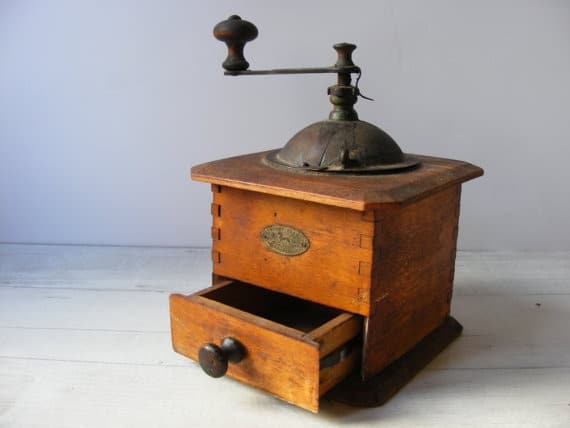
Grain grinding has been practiced for thousands of years. In the Neolithic period, grain was ground in hand mills by placing it in a concave stone and rubbing it with a rounded stone.
The revolving stone mill appeared after the hand mill, in which a stone rotates on a fixed one. They increased in size over time, first powered by people and animals, later by wind, water, or steam.
However, coffee was not always processed through a mill. It was manually crushed with a stone and a mortar. Keep in mind that it was not always used as a beverage. Because they had discovered the rejuvenating effects of coffee, the Ethiopians crushed the coffee fruit and combined it with fat, then formed small balls of dough and utilized them as a source of energy on long hikes.
Coffee spread from Ethiopia to Islamic countries, where it was highly regarded for its medicinal properties. It was utilized in various ways, including in wars to provide vitality before the fight and in medical texts to treat various illnesses.
Léonard Rauwolf was a German doctor and botanist who already in 1583 left writings on how it was consumed in liquid form in the Islamic world.
At some unknown point in history, coffee beans went from being crushed to leaving them soaking in cold water to consume as a drink.
From the 13th century, coffee beans were left in the sun to dry before being roasted, as is done today. According to folklore, the first time coffee was roasted was by monks.
A huge storm arrived while they were collecting the grains, so they dried them next to the fire. When they returned, they observed the lovely aroma of the grains and started using that technique.
Coffee was extremely popular among the monks because it helped them stay awake during their lengthy vigils.
By the fourteenth century, Constantinople had already recorded the first cafeterias, which served as gathering spaces for intellectuals and philosophers.
Islamic countries attempted to prohibit its drinking, but the drink became so popular that the prohibition was overturned. And the first technology for grinding coffee was devised in Islamic countries.
They were manual grinders that were used to mill spices, but they were also used to ground coffee. These copper or brass grinders feature a cylindrical shape with a crank at the top. They are made with remarkable finesse, as is the case with everything in Islamic culture.
Even though Islamic regimes outlawed the export of coffee, European traders were able to get the plant to Europe and eventually to America.
By the 17th century, coffee had become widely popular over the world, and the first coffee grinders began to appear. They were opulent artifacts destined for high social courts in France.
The French used precision technology they already knew from weapon manufacturing. One of the first places where these new utensils would be created would be Saint-Etienne.
The first serial mills in France were known as the “Louis XIV model.” They are made from a single piece of walnut wood.
And they weren’t for sale to the general public; instead, they were built to order by expert blacksmiths or toolmakers.
It is not until the eighteenth century that the most functional mills develop. The majority of them have a mechanism to secure them to the table.
The “hourglass” model was the most popular model of the period, and it influenced the following versions. A bayonet connection connected the two cones.
Nicholas Book, an Englishman, made a bold declaration in the 17th century. He is credited with creating the first coffee grinder in the world. Most likely, it was purely a publicity trick, like coffee, and the method of grinding it was already well-known in Europe at the time.
Indeed, Humphrey Broadbent wrote in his book “The Domestick Coffee-Man” in 1722 that the distinguished families of Holland ground their coffee. It was also suggested that people grind their coffee to avoid contaminants like burnt berries.
Individual grinder models arose in the nineteenth century. The Flemish open-cavity mill was followed by the Peugeot mill in France in 1840, which had a significant influence on following models and is now highly prized by mill collectors and experts.
The Peugeot model
The Peugeot versions popularized and made the wooden grinders in the shape of boxes a symbol of the coffee grinder.
Peugeot grinders come in 56 different models with 280 variations in terms of material, size, design, and color.
They first appeared on the market in 1840 and were commercially made until 1960. Peugeot invented the silent grinder in 1938. They have a sheet metal hopper to absorb the mechanism’s vibrations.
Peugeot grinders are of excellent quality, with beautifully machined parts. The cranks are constructed of polished steel, and the deluxe ones have had a nickel bath since 1890.
The coffee was loaded from the back of the unit until 1935 when it was moved to the right side.
Coffee grinders had fallen out of favor by the second part of the twentieth century and were nearly extinct by 1975 when electric grinders were introduced to the market.
How Do You Know If Your Grinder Is Vintage?
To identify an old coffee grinder or a vintage mill, you must first understand what they are constructed of.
The material it was built of will immediately tell you how old it is. Before the 1950s, all mills were made of wood, cast iron, or glass.
The grinder knob is another easy way to spot them. Keep in mind that the first electric mill without a crank was invented in 1938, but electric mills did not become popular until the 1960s when traditional mills were no longer man
Brand recognition and serial numbers
Knowing the brand and year that the coffee grinders were made is crucial to determine if they are old or not.
It was fashionable to have the brand name printed on the front of the grinder. There are certain exceptions, such as the back of the box.
You must also consider the serial number, as you will not be able to identify the year it was manufactured without it. The majority of serial numbers can be located around the corporate logo.
The MacMillan Index to Antique Coffee Grinders contains more information. A very valuable book that offers a comprehensive list of coffee grinder serial numbers.
Manufacturers of coffee mills in Europe
As you can expect, there are a lot of coffee grinders from Europe. For example, the DePe brand from Germany is well-known and easy to recognize. Because all of their grinders are white glass with the word “coffee” written in German on the front.
It’s also worth noting that the DePe brand changed the typeface with which it signed its models after a few years, thus varied signatures from the same brand are not uncommon.
Another instantly recognizable brand is the well-known DeVe from Holland. The firm used to lavishly embellish its models with intricate artistic drawings.
These drawings also aid in determining the year they were created, as the style of the painted artwork represents the decade.
M-S-F and Elma from Spain, Spong, and Kenrick from England, and Armin Tosser from Germany are all well-known brands in Europe.
Manufacturers of coffee mills in America
The United States also had several quality manufacturers when it came to coffee grinders.
One of the most famous was the Charles Parker Co. which made mills from 1860 to 1950. Keep in mind that the company changed the signature of their mills to CPC and then changed again to Parker starting in 1920.
Arcade King is another brand that one can come across regularly. The company stopped making mills relatively soon. By 1910 they were no longer making models, but they were of such good quality that they continue to work to this day and are highly valued by collectors.
Other brands worth mentioning are Fray & Clark and Logan & Strobridge.
Is There Any Value in Antique Coffee Grinders?
But, sure, of course. Coffee grinders from the old days are highly collectible and can be worth hundreds of dollars or more.
However, it is recommended that you use the following criteria to receive an approximate price for your antique grinder.
Inspect the condition of the grinder
It’s important to remember that a coffee grinder was once a common household item. That it is usually worn out or does not function well.
It’s also worth remembering that materials like wood or cast iron will unavoidably deteriorate over time.
The way it was maintained, where it was stored, and the sort of climate it was exposed to are all factors that influence its degeneration. However, four criteria might greatly assist you in determining all of this.
- Many collectors may use it as a decorative piece, but it is a 100% functional instrument, not an ornament. So, if your coffee grinder is in fine working order, the price will almost certainly increase.
- Remember that because the piece is made of iron, there is always the risk of it rusting. If the rust is only superficial, it can be repaired; nevertheless, other elements may not meet the same destiny, and the rust may become substantially affected, lowering its worth.
- If your grinder isn’t 100% functional but still looks great, you’re in luck because most collectors use it for decoration, so it won’t stop you from selling it. Porcelain mills are popular because, in addition to having exquisite finishes, they are also exceedingly resistant to the passage of time and do not sustain significant damage.
- Take a close look at your grinder for any cracks, as most are constructed of wood, which cracks over time. The fewer the cracks, the higher the market price.
Examine the grinder
You must pay close attention to the smallest details. Examine your grinder from every angle. We recommend writing down all of your grinder’s details in a notepad, including the size, materials used, embellishments, and any other distinguishing or distinctive features.
Nothing should be allowed to escape. Check to see if it’s portable or if it needs to be mounted on the wall, and if it has table support or not. Look for brands and serial numbers as well.
Also, keep in mind the names of the most well-known corporations. Here’s a quick rundown to help you remember: Arcade King, Kenrick, Elma, M-S-F, PeDe, Fray & Clark, Armin Trosser, DeVe, and Charles Parker Co.
Similar models
We recommend that once you’ve written down all of the data about your vintage grinder and learned the names of the manufacturers and their variants, you examine the pricing of auctions or vintage object pages. This type of information is also available on sites like eBay.
The idea is to look for grinders that have already been sold rather than those that are currently on the market. It’s critical to remember that anyone can ask for anything they want for any object, even if it’s a ridiculous amount.
True collectors, on the other hand, will know how much to pay for certain items. You will be able to get a better idea of how much you can make for the item you wish to sell if you look at previous sales.
That way, you won’t make the error of pricing it too high, resulting in no sales, or, even worse, price it too low, resulting in a missed opportunity to profit from your coffee grinder.
Is it Possible to Use an Antique Coffee Grinder?
Yes, you can use an old manual coffee grinder, but first, make sure it works properly and is worth fixing.
You must ensure that all of the components are present and functional. You must be extremely careful because even the tiniest loose screw can cause the entire device to malfunction or fail in a short period.
Check that the handle and burrs are in good working order and are sharp, as these are the ones that will smash the coffee beans. If you see any chipping, you’ll need to replace them, and you should try if you can find an equivalent replacement or have one made.
Wood mills are also a problem due to mold, as are iron mills due to rust. As long as the problems are superficial, there is a solution, but if they compromise its structure, there is not much to do.
If you see that it is not worth investing time and money, it is recommended that you use them as decorative objects in your kitchen or the dining room.
Restoration of an Antique Coffee Grinder
- Everything must be disarmed. Be patient and take it one step at a time. Emphasize the burrs, as they are the grinder’s most important component. Some screws will be concealed in the mill mark on the plate.
- Soak all of the disassembled parts of the grinder in a coffee cleaner for several hours. Remember that there is coffee residue from many years ago, so remove everything. After soaking the parts, clean them one by one to ensure that all contaminants are removed.
- Remember to clear out the grounds drawer. It will very certainly be full of coffee grounds as well. To deep clean, it, mix the cleanser with hot water.
- After that, clean the grinder’s body with a moist cloth or a cleaning brush. Ensure that all coffee residue is removed.
- You can polish the grinder’s metal for a more comprehensive restoration. This will be determined by how much you want to restore it and how you intend to use it.
- Reassemble it once everything is clean and dry, and it’s ready to use or display.
Grind On With These Top Rated Antique Coffee Grinders
And for those who aren’t interested in preserving an antique coffee mill or using it to decorate their home, but still want to be able to have their own coffee grinder to enjoy a wonderful freshly brewed cup of coffee, here are some modern versions that look and feel like vintage grinders. We hope you find them helpful.
- Zassenhaus Santiago Manual Coffee Mill, Black Stained Beech Wood
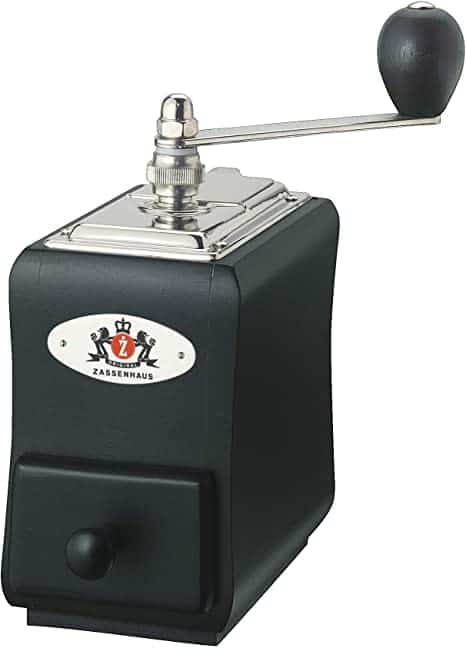
- Zassenhaus Brasilia Dark Stained Beech Coffee Hand Mill Grinder – 151DG
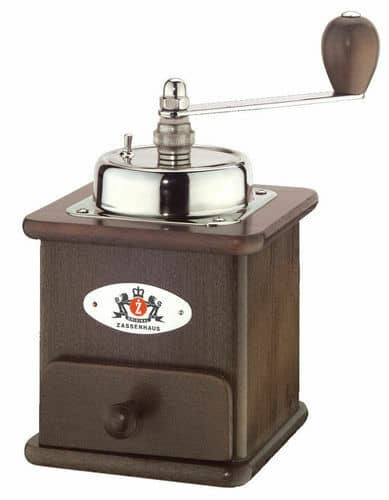
- Coffee Grinder Foruchoice Vintage Style Coffee Grinder Spice Hand Grinding Machine Hand-crank Roller Drive Grain Burr Mill Coffee Machine
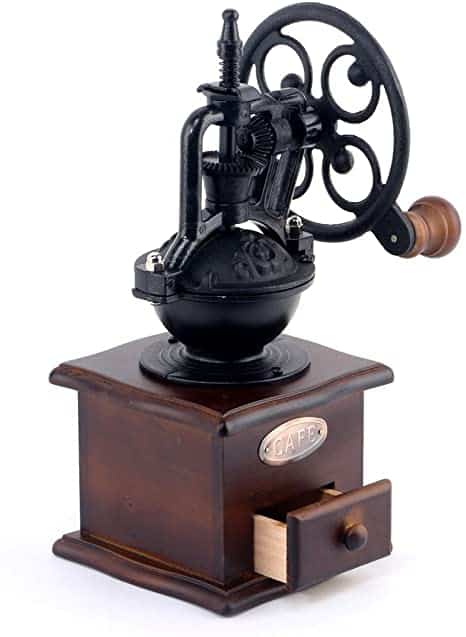
- Hario MM-2 Coffee Grinder, Small
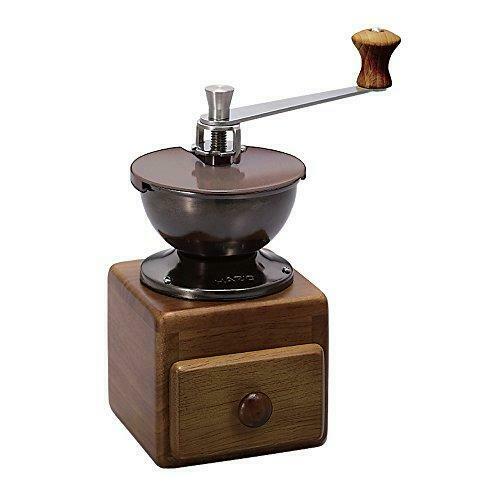
- Norpro 5548 Coffee Grinder
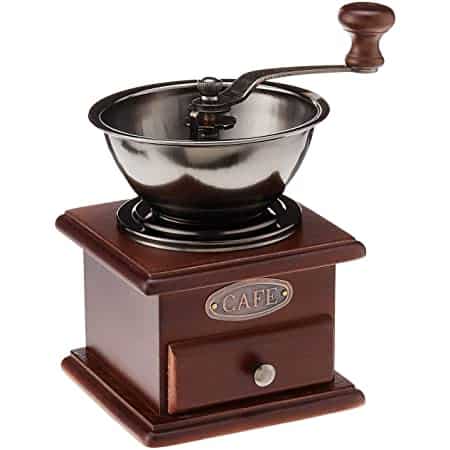
All these models are available in the most popular online stores on the internet.
Remember that if you have a vintage grinder at home that has been buried in the basement, you should dig it out and start bringing it back to life.
If you don’t feel like restoring it and drinking a lovely cup of coffee, it can make an excellent gift for someone who enjoys antiques, or you could conduct some more study on the interesting world of coffee grinders and sell it later for a profit.
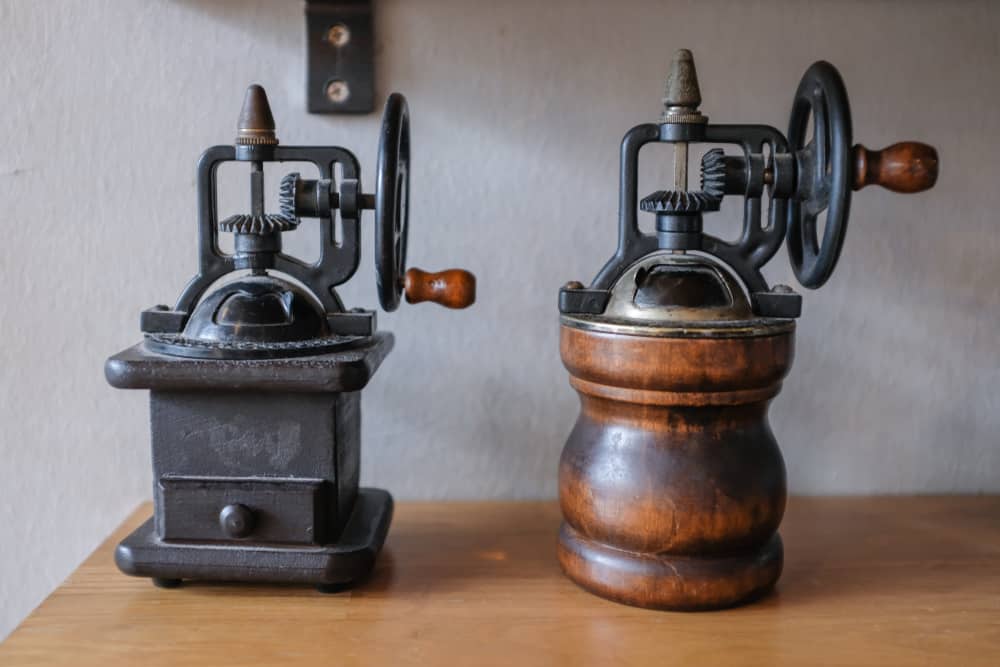
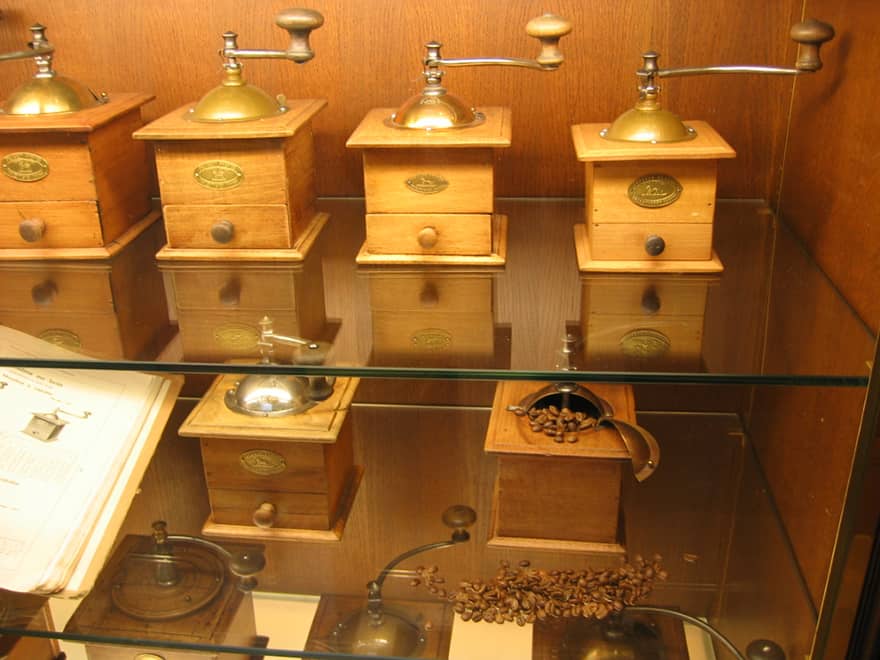
Dear Sir or Madam,
I have a coffee grinder as on the top picture of this article (the one at the right). Could you tell me who is the manufacturer and how old it is. Or can you let me know where I could find more information about it.
Thank you
Kind regards.
Paul Vandenbon